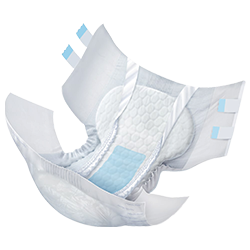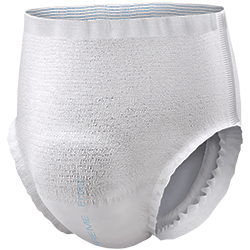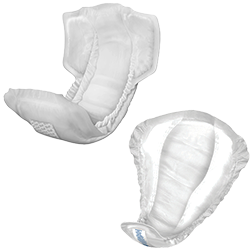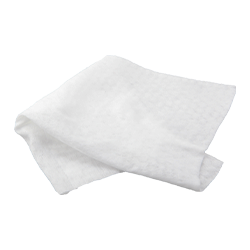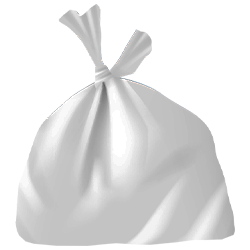Female Urinary Incontinence: Symptoms, Causes, Treatment and Management

Bladder leaks, or incontinence, affect many women, especially as they go through certain life events, including childbirth and aging. The condition can cause someone to leak before making it to the restroom, causing uncomfortable and sometimes embarrassing situations. Luckily, there are options. In this guide, you will learn about some of the common types of urinary leaks, how to prevent them and how to manage them.
Do you want solutions for managing urinary incontinence? Browse our incontinence products catalog for super-absorbent supplies.
How Does Stress Incontinence Impact Women?
Stress incontinence occurs when the body experiences stress that puts pressure on the bladder. This is the most common form of incontinence. Stressors include:
-
Coughing
-
Sneezing
-
Laughing
-
Heavy Lifting
-
Cardiovascular Exercise
Causes of stress incontinence may include vaginal births, weight gain, hysterectomies, neurological changes and conditions and taking certain medications.
How is Urge Incontinence Different?
Urge incontinence occurs when the need 'to go' strikes suddenly. It can even happen, too, in the middle of the night. It is often related to a problem with the body's detrusor muscles that relax to fill the bladder and contract to expel urine. Causes of urge continence include drinking certain liquids, UTIs, constipation, neurological conditions and taking certain medications.
What Are The Signs of Overflow Incontinence?
Overflow incontinence occurs when the bladder doesn't completely void itself and leaks over after urinating. This usually happens when there is a blockage preventing the full release of urine. The bladder can become blocked by bladder stones or constipation.
What Can Cause Functional Incontinence?
Functional incontinence occurs when the bladder works properly, but other physical ailments or environmental conditions prevent a person from making it to the restroom in time. Some conditions that can cause functional incontinence include:
-
Arthritis
-
Mental Disorders
-
Bad Vision
-
Urinary Tract Infection
What Can Women Do To Live With Urinary Incontinence?
While some incontinence is unavoidable, there are things you can do to try and lower the risk. See if these tips help and consult a physician to explore if medical treatment is needed.
Lose Weight
Losing weight will relieve some of the stress placed on the bladder. Eat healthily and regular exercise if possible.
Pelvic Exercises
Strengthening the pelvis may help increase bladder control. There are many online pelvic resources available or talk to a health care provider about devices to improve strength such as kegel balls.
Avoid Irritants
Certain drinks will increase the likelihood of incontinence. Eliminating such drinks can help improve results. Drinks that seem to commonly trigger female incontinence include:
-
Coffee
-
Energy Drinks
-
Alcohol
-
Acidic Drinks
Female Urinary Incontinence Treatment
No one wants to live with incontinence. Luckily, there may be solutions. See a doctor if you notice urinary incontinence symptoms are not going away, getting worse and/or affecting quality of life. To get the most information, a doctor will likely ask you to record urination habits for at least a couple of days or even up to a week. The bladder diet will include what you eat and drink each day, each time you urinate and how much urine is produced each time. This is when the doctor measures urine output and then measures how much remains in the bladder. When the doctor has the necessary information, a treatment plan will most likely be discussed.
Medication
One of the most common treatments is medication. Depending on the type of incontinence, the medication will either relax the bladder or strengthen the urethra.
Botox
Botox is used to freeze muscles, so this works best when the incontinence is caused by overstimulation. This is the case for many people who suffer from spinal cord injuries and multiple sclerosis (MS).
Medical Devices
Doctors may use a device to help manage incontinence. A urethral insert absorbs any excess urine before it drips out of the vagina. A pessary looks like a ring and supports a collapsed bladder. Finally, a catheter is inserted into the urethra to empty any remaining urine.
Surgery
Some cases may require surgery. The two most common surgical procedures for incontinence are the sling procedure and retropubic colposuspension. The sling procedure is an outpatient procedure during which the doctor creates a 'hammock' to catch excess urine. A retropubic colposuspension is an inpatient procedure that is needed when the bladder has prolapsed and the doctor must secure it back in place.
When treatment is unable to fully address the symptoms of incontinence or the fear of leakage, there are various incontinence products and supplies that can be used to help manage bladder control problems.
Tips For Managing and Living With Incontinence
Treatment may not be able to rid incontinence symptoms completely. Even with treatment, most women must learn how to live with the condition. Here are some helpful tips:
Talk About It ... But Only If You Want To
Sometimes talking it out with family and friends can make people feel better. If you notice that your loved one has started to have accidents more than “every once in a while,” or if the occasional dribble has turned into more of a gush, it means it’s time to have a conversation about incontinence and absorbency products.
Manage Liquid Intake
Most people have the luxury of drinking what they want without mentally creating an escape plan to the bathroom each time. If you realize you might not have a bathroom nearby, plan ahead. You probably don't want to drink a 'Big Gulp' in that case. Avoid drinking excessive amounts of liquid, and avoid drinking anything with a lot of caffeine or acid that may impact bladder capacity or function.
Carry Absorbent Products
Accidents will happen, and it won't always be possible to make it to a restroom in time. Be prepared for these moments by having incontinence products available when it is clear that reaching a bathroom when needed will not be possible. Depending on the incontinence level and absorbency needed, supplies can include tab-style briefs, protective underwear, liners, pads, waterproof covers and more. Keep items in a secret place like a purse or backpack and use them as necessary. You'll be happy to have them when and if the time comes. NorthShore carries a wide range of products with up to 3x the leak protection of leading store brands.
Bladder leaks, or adult urinary incontinence, can be embarrassing and uncomfortable, especially when they catch you by surprise. Please do something about it by going to the doctor to talk about it. Female urinary incontinence is natural, so try not to be too shy to seek necessary help ... and use absorbent products in the meantime to help manage and live life to the fullest.
Certain incontinence symptoms unique to women can often be managed with products that address their specific needs. To learn more, visit our online Incontinence Products for Women Catalog or call (800) 563-0161 for personalized recommendations and assistance.
*Regardless of capacity, an absorbent product must be changed immediately following a bowel movement.
More Blogs Focused on Women
Shop Popular Products for Women
Starting at $4.99
FSA/HSA Eligible
Starting at $8.99
FSA/HSA Eligible
Starting at $3.99
FSA/HSA Eligible
Starting at $13.99
FSA/HSA Eligible
Starting at $7.25
FSA/HSA Eligible
Starting at $2.49
FSA/HSA Eligible
